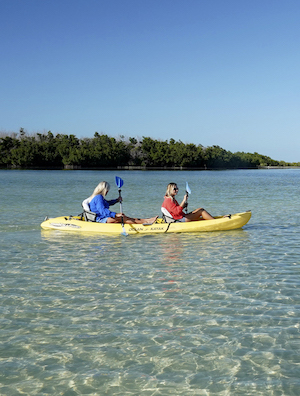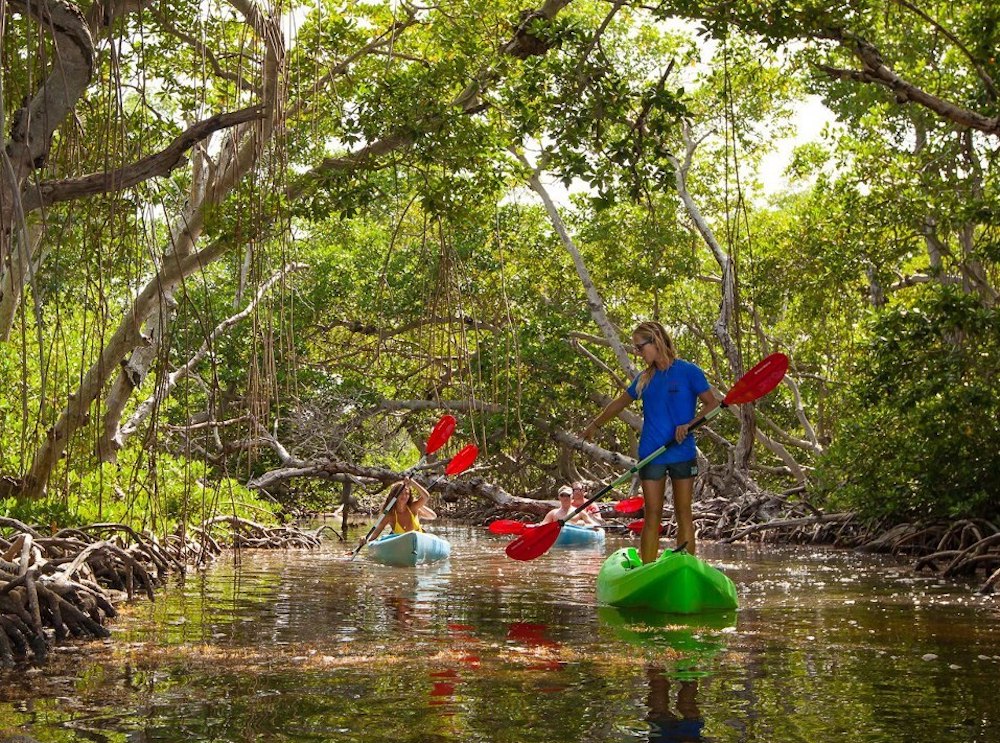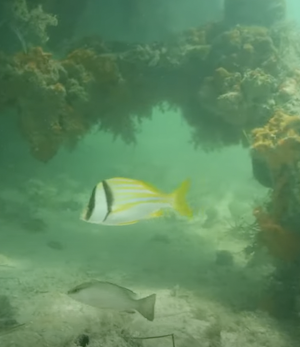These days, the intense press of work schedules and responsibilities — plus the ever-present lure of social media — make it all too easy to get overstressed, overstimulated and overwhelmed.
When the “real world” seems especially stressful, it’s time to escape to a place that recharges the body and re-centers the spirit. A place that, ideally, fosters a reconnection with life’s natural rhythms.
While that place may be different for different people, many find it in the Florida Keys backcountry — a realm of natural beauty, tranquil waters and seemingly limitless horizons.
Ruled by the natural ebb and flow of the ocean, the backcountry is home to one of the most diverse assortments of marine life in the world.
This shallow region of flats and mangrove islands lies mostly along the north side of the Florida Keys Overseas Highway. Not easily accessible to boat traffic, it’s largely unspoiled and teeming with plant and animal life.
In part because these waters are protected within the Florida Keys National Marine Sanctuary, the region is a great place to explore nature by kayak. Shallow-draft kayaks, requiring no special skills or experience to paddle, enable just about anyone to venture into the backcountry waters for a respite from cares.

Kayakers paddle over a stretch of sandy flats near Marvin Key, where vast vistas of blue and green inspire serenity. (Photo by Rob O’Neal, Florida Keys News Bureau)
Both guided tours and kayak rentals are available throughout the Keys, but a guided tour is usually the way to go for first timers. Most guides are eager to share their knowledge about the region’s environment, so a tour can become a fascinating mixture of field trip, natural history lesson and soul-soothing downtime.
The Keys’ backcountry environment ranges from mangrove communities to turtle grass flats to sponge flats.
Mangrove islands are composed of tangled stands of mangroves, their aerial roots forming tunnels and fantastic twisted shapes that engender a sense of hush and wonder.
Wildlife and rare birds abound; you might spot roseate spoonbills, osprey, great white herons and maybe even bald eagles.
Gazing over the side of your craft, you’ll discover the rich biodiversity within the mangrove root systems (the roots are actually a nursery for young grouper, lobster, barracuda and other species).
Turtle grass areas too are a unique part of the backcountry. Turtle grass looks a lot like lawn grass — but anyone who pulls up a flat green blade is likely to see snails, tiny aquatic animals, scurrying juvenile fish and other inhabitants of this busy ecosystem.
Appearing completely engrossed in their small world, unaware of being observed, they offer a fascinating lesson in mindfulness.
Also a part of the backcountry are the sponge flats — the rocky sea-bottom home to bright-colored sponges and soft corals.
The grass flats and sponge flats can also support small lobster, young reef fish, turtles, stingrays and big predators like shark and barracuda. If you’re lucky, you might even spot a graceful rolling tarpon.
Some people define the tranquil Keys backcountry as a place whose natural wonders take their breath away.
Others say it’s a place where they can finally catch their breath after being exhausted by the fast pace of contemporary life.
Either way, exploring the area offers a chance to reconnect with nature, reset priorities and renew body and soul.
So next time responsibilities start feeling too heavy, consider unplugging, slowing down and immersing yourself in the Florida Keys — the real, unspoiled Florida Keys — on a backcountry kayak excursion.
To find one, check out the listings here.



